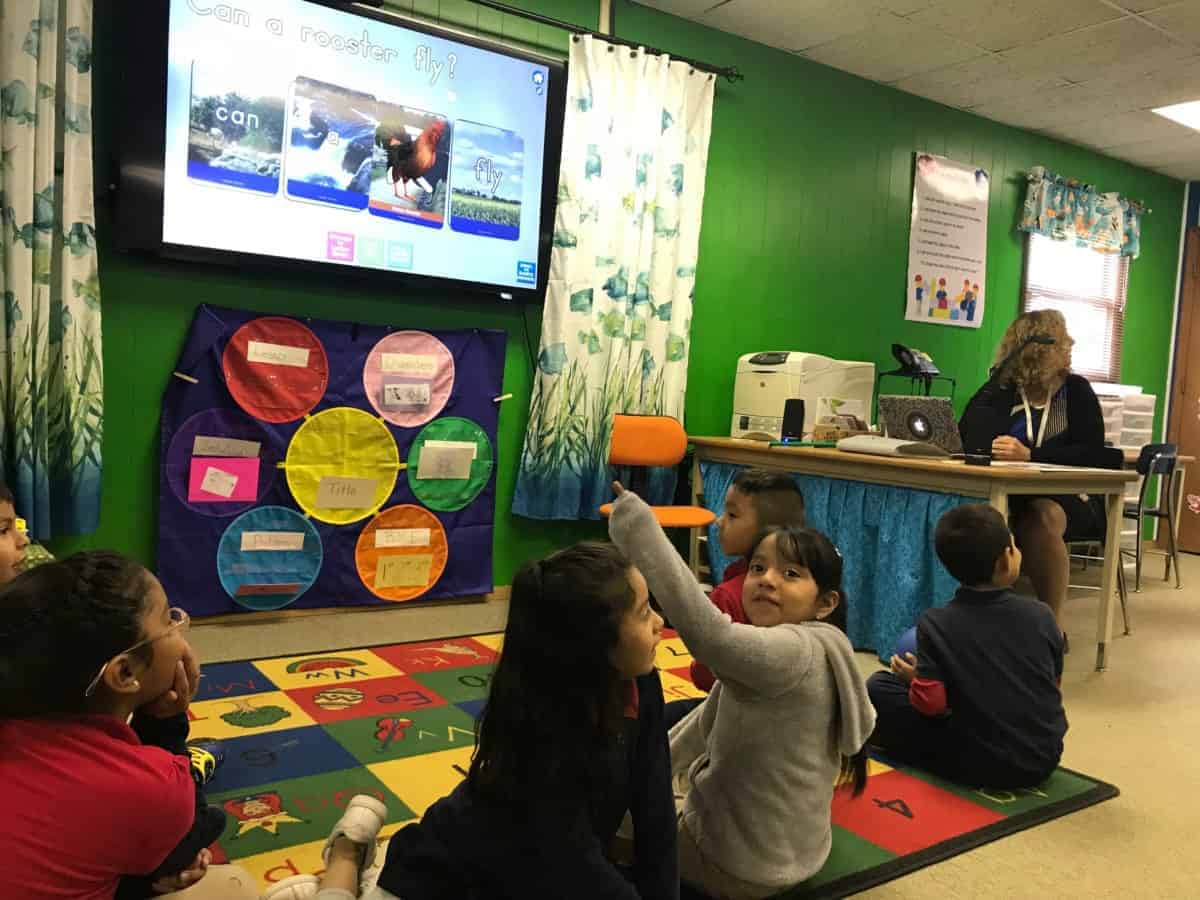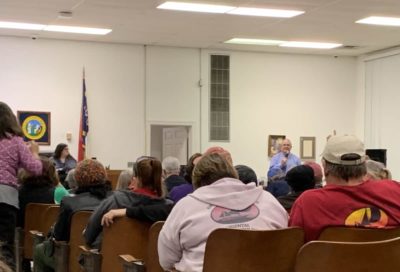

Jamie Troche remembers how grateful she felt to find only minor damage to her home when she returned after evacuating ahead of Hurricane Florence’s landfall.
“The next morning, we had internet and power,” the math teacher at Wilmington Early College High School said, “and my son was all excited to play Fortnite.”
The story is a reminder of how quickly children can bounce back after a disaster. And, by contrast, how deeply affected they are when things don’t go as smoothly.
For Troche, the latter was a lesson she wanted to pass onto her son, stopping him before he could even reach his gaming controller. “Nope,” she said. “Get some dirty clothes on, and we’re going to go digging and help out in the community.”
The children are not often quoted or pictured in the stories following Hurricane Florence, but they have been a big part of the narrative. Acting as mediaries from their schools, they helped identify the needs of families at home. Their mental health, according to research, is a key indicator of the health and preparedness of entire communities. And returning them to a sense of normalcy has a deep impact on their education and their futures.
“From our perspective, children are really the bellwether of the recovery process,” said Beth Schrader, chief strategy officer of New Hanover County. “If our children aren’t doing well, then our community isn’t doing well.”
Schools are the heartbeat of the community
Schools are at the center of everything. They are the largest organizations and a mandatory destination for most children. And, as we saw in the wake of Hurricane Florence, they are an integral starting point for county officials to find families in need.
As students returned after Florence, schools made identifying needs the first priority. Teachers asked students about their homes and their families. They checked in with students not only on their mental health but also on what they needed physically.
Partnering with organizations, such as Communities in Schools in Robeson County, schools sent home surveys asking parents and guardians about the type of support they needed, and then they leveraged relationships with county government, emergency management, and volunteer organizations to help fill the needs.
“The school system is the largest organization in Pender County,” county superintendent Steven Hill said. “It’s the heartbeat of Pender County. When it’s open, everything functions around the schedule of the school. We’re here in emergencies, we’re here in entertainment, we’re here in athletics, we’re here in education — this is the heartbeat of this county.”
At some schools, nutrition staff worked quickly to make sure food that would not be used for students (as schools were closed for weeks) was distributed into the communities. And at many other schools, community stores popped up when churches, non-profits, and the state sent massive amounts of food and supplies.
“You could go in and get whatever you needed,” said Christy Strickland, who visited one of these efforts at Arapahoe Charter School. “They kept that opened for months.”
“It’s like an extension of our family,” retired teacher Jennie Kennel Adams said of the school.
Children need special attention
While schools are leveraging their resources to help communities, communities are tasked with banding together to help the kids. An essential function, Schrader says.
“Children don’t always have the tools to absorb what’s going on when you have a hurricane experience like we did,” she said. “It’s difficult for them to process all of these images. They don’t have a lot of personal control over their environments, and it’s really hard for them because they lose that sense of predictability and certainty and sense of routine.”
Schrader was involved with securing a grant for New Hanover County to address these issues, both in the wake of Florence and in advance of any future disaster. Taking a holistic approach to community disaster relief, she believes, starts by focusing on the children.
The grant for New Hanover County is part of the Resilient Children/Resilient Communities (RC/RC) initiative. A partnership between the National Center for Disaster Preparedness and Save the Children funded by a grant from GlaxoSmithKline, the RC/RC initiative is aimed at developing a model for child-focused disaster planning in communities.
Many communities, systems and child-serving institutions are not sufficiently prepared to meet the needs of children when a crisis strikes. A community’s resilience and ability to rebound from a crisis can be measured by its ability to care for its children, who are one of the most vulnerable populations in an emergency. In the simplest terms, a chain is only as strong as its weakest link. We need to hone in and strengthen the ‘links’ that serve children, thereby enabling families and communities to reduce the lasting impact of disasters. – National Center for Disaster Preparedness
“Very often, in recovery and in a disaster, we treat children as though they’re mini-adults – and they’re not,” Schrader said. “Their needs are unique and some of the challenges they face are unique.”
For instance, when New Hanover’s community recovery resource center was open, they had therapy dogs and a child play center on site when people were applying for disaster food stamps.
“It allowed us to begin to help children who were there,” Schrader said. “While giving their parents a break to do what they needed to do, the children could be children. And really, we helped them pivot to what were the more positive aspects. ‘Do you remember when you were rescued?’ ‘Do you remember what it felt like when you felt safe?’ versus reliving the disaster.”
New Hanover sees it as a way to transform their community. It’s part of a broader initiative where they are trying to approach recovery with an eye toward community progress, as well.
“The way we’re viewing recovery is: how can we use this as an opportunity to not only help restore us to where we were before, but take us further and make the community more resilient and even better,” Schrader said. “It’s tied very much to our strategic plan.”
Assistance for the kids
The RC/RC initiative is a limited program — with only four grants awarded to specific communities so far: Puerto Rico; Putnam County, New York; Washington County, Arkansas; and New Hanover. In the meantime, the state and local counties are stepping up to serve children, and students specifically, throughout impacted areas of the state.
Florence Assistance for Students and Teachers in North Carolina (FAST NC) was established in the immediate aftermath of the storm, formed by a bipartisan group of former educators and local leaders. It quickly raised more than $100,000 and has since grown to more than $1 million in donations. Much of that came just two weeks ago, when Google.org announced a $500,000 gift.
In the few months of its existence, FAST NC has already distributed two rounds of funding to more than 10 schools. And with a universally attractive mission – of helping children and those on the front lines with them – the capacity to help more is growing.
“The outpouring of help and support for these schools has been overwhelming, to say the least,” former state superintendent Mike Ward said, speaking at a Wilmington-area event where FAST NC announced the Google.org donation. ”I hoped it would be something we could use to make a difference, but I am not sure I expected this level of support.”


